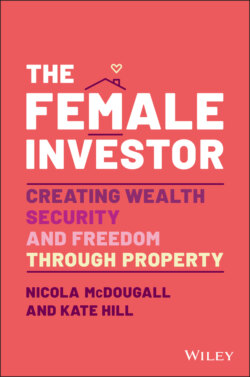Читать книгу The Female Investor - Kate Hill - Страница 8
THE FACTS
ОглавлениеHere are some cold hard facts about the financial outcomes for women and men in our part of the world.
While most of these figures are drawn from Australian research, the situation is similar in most countries around the world — and the reality is that women are more likely than not to be financially inequitable with their male partners from the beginning of their relationships.
The lack of financial literacy for young children and teenagers is one reason for this imbalance, but one scary fact is that the financial outcomes for women and men in retirement start to solidify at the beginning of our working lives.
According to the Australian Government's Women's economic security in retirement insight paper (2020), even when women are in their late 20s, their superannuation balances are lower than men's.
The research found that women are on the back foot financially from the beginning of their careers and if they decide to have children, the gap just gets wider and wider, and it will keep growing throughout their lives.
By the time a woman retires in Australia, according to the insight paper, her average superannuation account balance is 17.4 per cent lower than a man's, which reflects the average superannuation account balances of $277 880 for women and $336 360 for men.
Even with Australia's superannuation scheme, which started in 1992, many women in Australia still retire without any funds whatsoever. Sadly, about one third of women wind up with no superannuation at all when they retire.
Superannuation was designed to help more people become financially independent in retirement, but most women and men still rely on the age pension as their primary source of income during that stage of their lives. According to the insight report, in 2017–18 about 70 per cent of women compared to 63 per cent of men relied on government pensions and allowances — these allowances could include payments such as an energy or essential‐medical‐equipment supplement, remote‐area or carers allowance, or other benefit payments to help fund health and medical care.
Do you know how much the age pension is in Australia? In 2021, the maximum rate for a single person is less than $500 per week, including all potential allowances, which is hardly enough to live the life you've long dreamed about, is it?
For anyone under the age of about 50, retirement seems like a long way away, so we don't give it much thought, do we?
Of course everyone should enjoy their life rather than squirrel away every spare dollar for a stage of life that is decades in the future, but you can't ignore the truth forever.
This means that unless you prepare for retirement when you are youngish, including purchasing a strategically selected property (or perhaps two or three), then the outcome for you may be spending your twilight years in poverty. Here are some stark statistics from government research:
Women are more likely than men to re‐enter the workforce following retirement, often due to financial constraints.
Women are twice as likely as men to sell their house and move to lower‐cost accommodation because of tight financial circumstances in retirement.
The Women's economic security in retirement insight paper also reported more elderly women than men are living in poverty in Australia. Therefore, women are far more likely to face higher financial insecurity in retirement than men.
